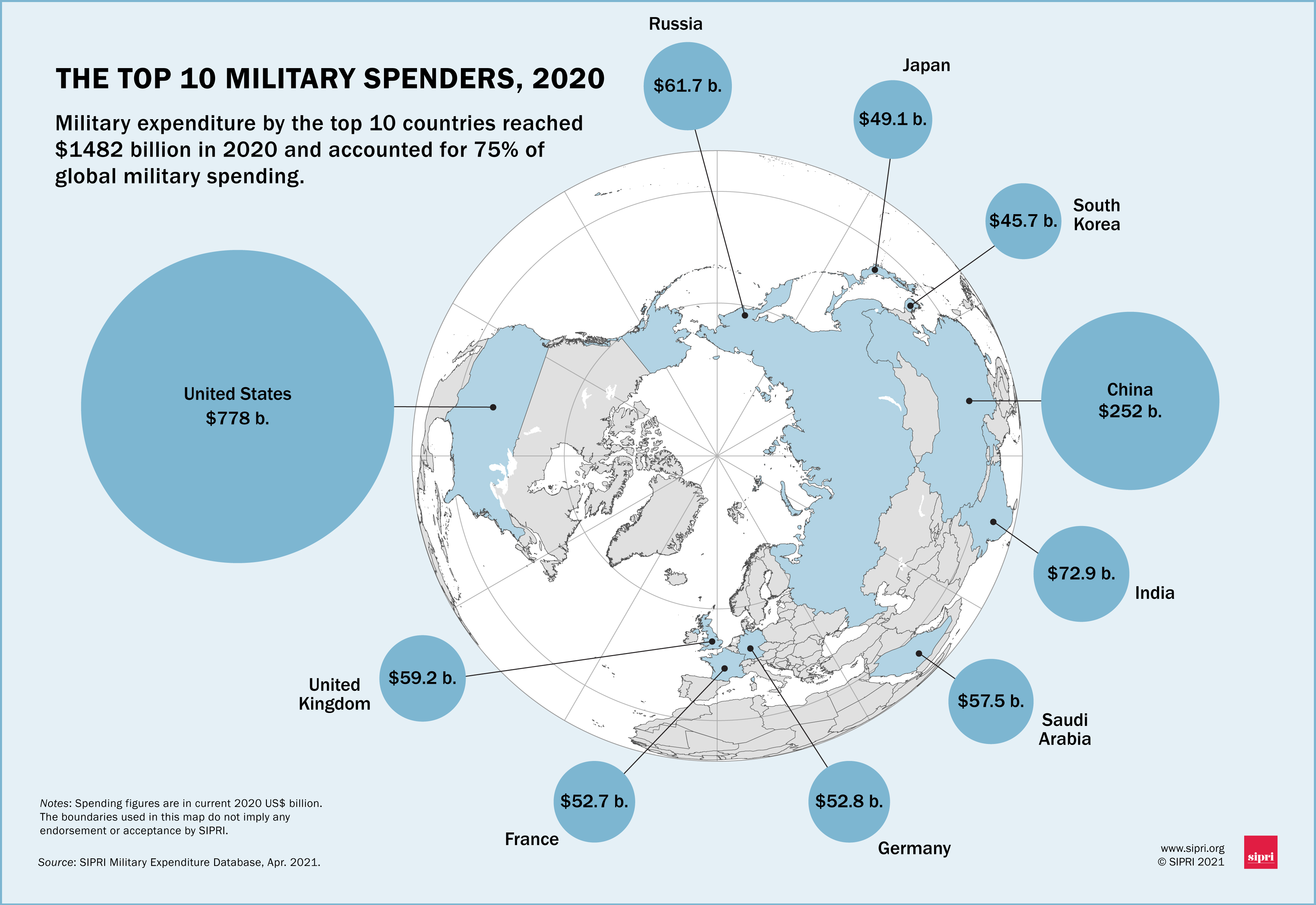Global Military Spending: Europe's Response To The Russian Threat

Table of Contents
The Surge in European Defense Budgets
The conflict in Ukraine has acted as a catalyst for unprecedented increases in European defense budgets. This surge is evident in the rising defense spending as a percentage of GDP across numerous nations.
Increased Defense Spending as a Percentage of GDP
Since 2022, many European countries have significantly increased their defense spending as a percentage of their GDP. This reflects a growing recognition of the need for enhanced military capabilities to counter potential threats.
- Germany: Germany, traditionally hesitant on significant military spending, has pledged a substantial increase, aiming for the NATO target of 2% of GDP. Estimates show a rise exceeding 50% since the start of the Ukrainian conflict.
- Poland: Poland, bordering Ukraine, has seen one of the most dramatic increases, prioritizing both its own defense capabilities and support for Ukraine. Their defense budget increase has been even more significant than Germany’s.
- United Kingdom: The UK has also committed to increasing its defense spending, aiming to maintain its position as a leading military power in Europe and a key NATO ally.
The NATO target of allocating 2% of GDP to defense spending has gained renewed importance. While several countries were already nearing this target, many others are now accelerating their efforts to meet it, demonstrating a collective commitment to bolstering security.
The economic implications of this increased spending are multifaceted. While it stimulates economic growth in the defense industry and related sectors, it also places a strain on national budgets, potentially diverting funds from other critical areas like healthcare and education. This necessitates careful economic planning and resource allocation to mitigate potential negative consequences.
Prioritization of Specific Military Capabilities
The increased funding is not simply about larger budgets; it's about strategic investment in specific military capabilities deemed crucial for addressing the Russian threat.
- Modernization of Armed Forces: Many European nations are modernizing their armed forces, replacing outdated equipment and investing in advanced weaponry. This includes everything from fighter jets and tanks to infantry weapons and communication systems.
- Cyber Warfare Capabilities: Recognizing the growing importance of cyber warfare, countries are investing heavily in strengthening their cyber defenses and developing offensive cyber capabilities.
- Air Defense Systems: Air defense systems, including missile defense capabilities, have become a priority, given the demonstrated threat from Russian air power and missiles.
- Missile Defense: Investing in advanced missile defense systems is a crucial element of European security strategies, aiming to protect against potential ballistic missile attacks.
These priorities are driven by a realistic assessment of the Russian military's capabilities and the need to deter potential aggression. The focus on these specific areas reflects a shift towards a more robust and technologically advanced defense posture across Europe.
NATO's Role in Shaping European Defense Strategies
NATO has played a pivotal role in coordinating and amplifying the European response to the Russian threat. The alliance's framework has facilitated increased military cooperation and strengthened the security of its eastern flank.
Enhanced Military Cooperation and Exercises
NATO has significantly increased the frequency and scale of military exercises and joint operations among its members. This enhanced cooperation serves several vital purposes:
- Improved Interoperability: Joint exercises improve interoperability between different national armed forces, enabling smoother and more effective collaboration during actual conflicts.
- Deterrence: The visible demonstration of military strength and coordination acts as a deterrent to potential aggression.
- Information Sharing: Increased cooperation facilitates the sharing of critical intelligence and operational information among allies.
Examples include the enhanced Baltic air policing mission and the increased deployment of NATO troops in Eastern European countries bordering Russia and Belarus. These initiatives aim to signal resolve and deter potential Russian incursions.
Strengthening Eastern Flank Security
NATO has implemented numerous measures to reinforce the security of its eastern flank, particularly the countries bordering Russia and Belarus.
- Increased Troop Deployments: NATO has significantly increased the number of troops deployed in Eastern Europe, enhancing the alliance's forward presence and rapid response capabilities.
- Enhanced Air and Missile Defense Systems: Significant investments have been made in modernizing and enhancing air and missile defense systems in the region, improving the ability to detect and counter potential threats.
- Infrastructure Development: Investments are being made in improving military infrastructure in Eastern Europe to enhance its resilience and operational readiness.
The effectiveness of these measures remains a subject of ongoing debate. While they undoubtedly contribute to deterrence, the potential for escalation and the complex geopolitical context require continuous assessment and adaptation.
National Responses to the Russian Threat
The response to the Russian threat is not uniform across Europe. Individual nations have adopted distinct approaches tailored to their specific geographical location, historical context, and national interests.
Case Studies: Germany, Poland, and the UK
Examining the responses of Germany, Poland, and the UK provides insights into the diverse approaches taken by European nations.
- Germany: Germany's approach has involved a significant increase in defense spending, a shift towards a more assertive military posture, and a strengthened commitment to NATO. They’ve focused heavily on air defense and modernization of their ground forces.
- Poland: Poland has adopted a more proactive approach, significantly increasing its defense spending and investing heavily in modern military equipment. Their focus is on rapid response capabilities and border security.
- United Kingdom: The UK has emphasized its role as a leading military power in Europe, increasing defense spending, and continuing to maintain a strong military presence globally. They’ve focused on maintaining a strong naval presence and cyber capabilities.
These examples highlight the different priorities and approaches adopted by European nations in responding to the perceived Russian threat. The unique circumstances and strategic considerations of each country shape their respective defense strategies.
The Impact on European Geopolitics
The shift in European military spending has far-reaching geopolitical implications, influencing relationships between European nations and their alliances.
- Increased Cooperation: The shared threat has fostered increased cooperation and coordination among European nations.
- Potential Conflicts of Interest: Despite increased cooperation, differences in national interests and strategic priorities can still lead to potential conflicts of interest.
- Shifting Alliances: While NATO remains central, there are subtle shifts in bilateral and multilateral relationships between European countries based on their perceived security concerns.
The increased defense spending represents a fundamental shift in European geopolitics, altering the balance of power and shaping the continent's future security architecture.
Conclusion
The dramatic increase in Europe's military spending is a direct consequence of Russia's aggression in Ukraine. This surge reflects a fundamental shift in European security priorities, characterized by enhanced military cooperation within NATO, focused investment in specific military capabilities, and a renewed commitment to collective defense. Understanding the drivers and implications of this Europe's military spending increase is crucial for comprehending the evolving geopolitical landscape and the future of European security. To stay informed about the latest developments in European defense strategies, continue following news and analysis on Europe's military spending and related topics. Keep abreast of the evolving situation and the implications of increased Europe's military spending for the future of European security.

Featured Posts
-
 Doug Emhoffs Dismissal From Holocaust Memorial Council Under Trump
Apr 30, 2025
Doug Emhoffs Dismissal From Holocaust Memorial Council Under Trump
Apr 30, 2025 -
 Our Yorkshire Farm Reuben Owens Update On His Eight Siblings
Apr 30, 2025
Our Yorkshire Farm Reuben Owens Update On His Eight Siblings
Apr 30, 2025 -
 China Urges Drugmakers And Hospitals To Replace Us Imports
Apr 30, 2025
China Urges Drugmakers And Hospitals To Replace Us Imports
Apr 30, 2025 -
 Kering Document Amf Cp 2025 E1021784 Rapport Du 24 Fevrier 2025
Apr 30, 2025
Kering Document Amf Cp 2025 E1021784 Rapport Du 24 Fevrier 2025
Apr 30, 2025 -
 Kareena Kapoors Candid Conversation Lines Cosmetic Surgery And Star Life
Apr 30, 2025
Kareena Kapoors Candid Conversation Lines Cosmetic Surgery And Star Life
Apr 30, 2025
